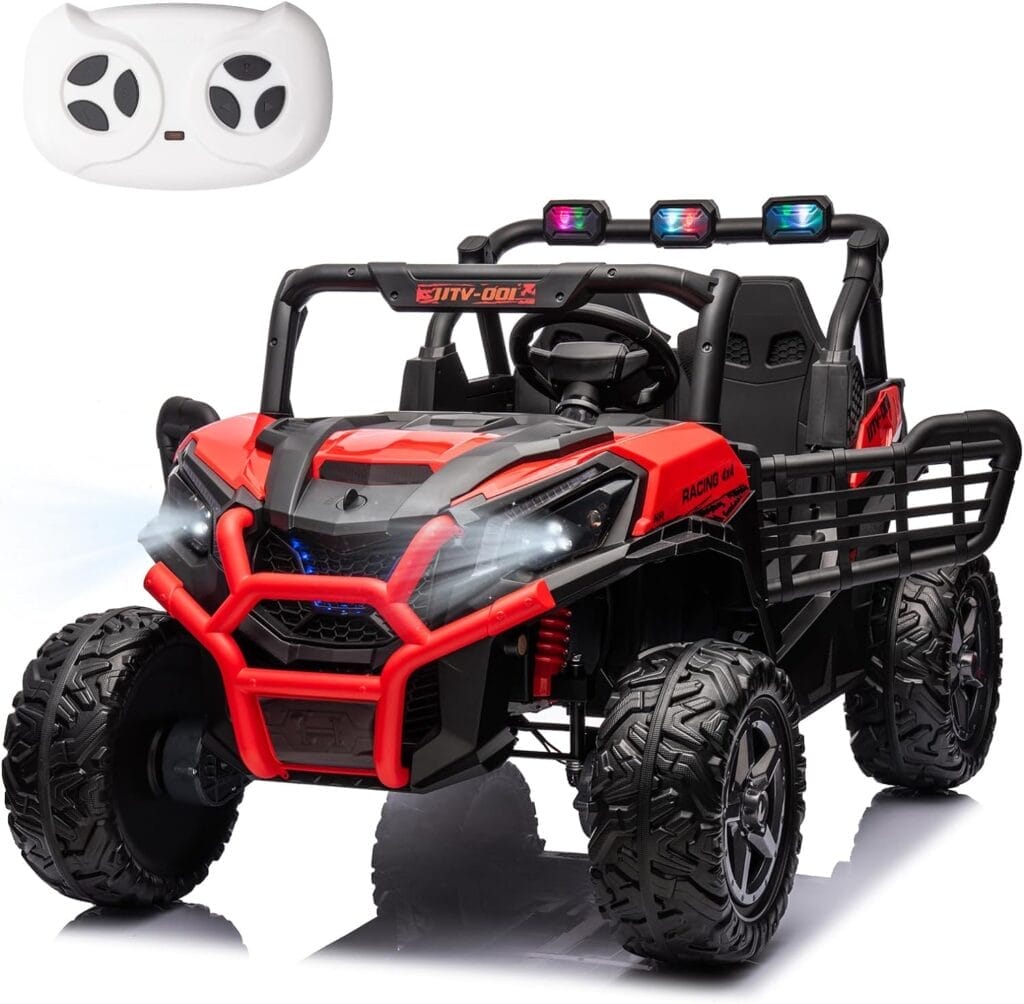
Electrifying the Roads: Exploring the Best Electric Utility Vehicles for Diverse Needs
The electric revolution is not just confined to passenger cars. Today, electric utility vehicles (EUVs) are transforming how businesses, resorts, and outdoor enthusiasts operate, offering both environmental and economic advantages. As industries and individual consumers alike seek more sustainable and efficient transport solutions, the role of electric utility vehicles becomes increasingly vital. Let’s delve deep into the world of EUVs to understand their benefits, challenges, and the top contenders in today’s market.
What Makes Electric Utility Vehicles a Smart Choice?
Electric utility vehicles, designed to handle various tasks across different terrains, are equipped with electric motors and battery packs, making them both powerful and environmentally friendly. Here’s why they are gaining traction across multiple sectors:
Economic Efficiency
Electric utility vehicles have lower operating costs compared to their gasoline-powered counterparts. They are cheaper to maintain due to fewer moving parts and do not require oil changes. This makes them particularly attractive for fleet operators and commercial businesses looking to optimize their operational budgets.
Environmental Impact
Emissions from gasoline-powered vehicles are a major environmental concern. Electric utility vehicles, however, produce zero tailpipe emissions, which helps in reducing the carbon footprint. This is especially important for operations within ecologically sensitive areas such as resorts or golf courses.
Versatility and Adaptability
From towing packages to customizable bed configurations, electric utility vehicles are tailored to meet specific needs. Whether it’s hauling equipment across a large golf course or transporting goods within a busy industrial complex, there’s likely an EUV setup to handle the task.
Highlighting the Leaders in Electric Utility Vehicles
Understanding the different offerings on the market can help you spot the right EUV for your needs. Let’s look at a few industry leaders and their standout models.
The Workhorse – Tesla Cybertruck
Tesla, known for its innovation in electric passenger cars, is set to shake up the utility vehicle market with the Cybertruck. Its striking design and robust features like:
- Ultra-hard 30X cold-rolled stainless-steel exterior
- Armored glass for durability
- Flexible interior space with seating for six
- Expected towing capacity of over 14,000 pounds
- Multiple electric motors option for superior performance
The Cybertruck promises to be a game-changer for industrial uses, construction, and even adventurous outings, combining Tesla’s advanced electric technology with utility features.
The Versatile Transporter – Rivian R1T
Rivian’s R1T isn’t just a pickup; it’s a versatile tool that’s perfect for both commercial needs and outdoor enthusiasts. With features that include:
- A quad-motor system for precise control and power
- A 300+ mile range on a full charge
- Innovative storage solutions like a full-width “gear tunnel” and front trunk
- Off-road capabilities with adjustable air suspension
The R1T blends utility with the performance and durability needed for rugged environments.
The Compact Solution – Polaris Ranger EV
For operations requiring maneuverability and ease of use, such as maneuvering around golf courses or quiet operations within resort environments, the Polaris Ranger EV is ideal. This compact EUV offers:
- A 50-mile range, perfect for short and mid-distance tasks
- Seating for two and a small cargo bed for transport needs
- A tight turning radius ideal for narrow paths
- Minimal noise, a critical feature for maintaining a serene environment
Evaluating Electric Utility Vehicles for Your Business
Choosing the right EUV involves understanding specific needs like load capacity, range, terrain handling, and budget. Below are some factors to consider:
Assessing Your Operational Requirements
- Load Capacity: Understand the weight and volume of materials you frequently transport.
- Operational Range: Ensure the battery range meets your daily distance needs without frequent recharges.
- Terrain Suitability: Consider the type of terrain the vehicle will need to navigate.
Adoption Considerations and Challenges
While the benefits of EUVs are clear, adoption can come with challenges like:
- Initial Investment: Higher upfront costs compared to traditional vehicles.
- Infrastructure Needs: Requirement for charging stations.
- Technology Adaptation: Training staff to operate and maintain new types of vehicles.
Electric utility vehicles represent a dynamic and burgeoning field in the automotive sector, driven by the push towards sustainability and efficiency. Whether it’s a robust truck for tough terrains or a sleek, silent carrier for a resort, there is an EUV out there that can meet the growing variety of needs. By choosing the right model, businesses and enthusiasts can not only contribute positively to the environment but also enjoy substantial economic benefits. As technology continues to evolve, the capabilities and range of EUVs will only expand, making them a smart choice for an ever-widening array of applications. Do you think an electric utility vehicle fits into your future? It’s worth giving it some thought as we drive towards a cleaner, more sustainable world.
- You don’t need to worry about anything, we will deliver the package to your doorstep. The package is…
- The Electric Cargo Tricycle Truck Scooter is an energy-saving and environmentally friendly mode of…
- This fully electric tricycle is easy to drive, with strong power and a maximum speed of 25 mph,…
- POWERFUL 10,000-WATT DUAL MOTORS: Experience unmatched performance with dual electric motors…
- ALL-WHEEL DRIVE & ADVANCED SUSPENSION: Navigate varied landscapes with ease thanks to AWD and…
- TECHNOLOGY FORWARD DESIGN: Stay connected with a 10-inch touch screen, WiFi, Bluetooth, and a backup…
- Perfect Design: This UTV cab enclosure has a built in sliding window giving you control over how…
- Built-in sliding window–Removable top half for increased airflow 💥
- Full door is easily removable for hot summer rides ❗
- You don’t need to worry about anything. We will deliver the package directly to you. All you need to…
- The Electric Cargo Tricycle Truck Scooter is an energy-saving and environmentally friendly mode of…
- This fully electric tricycle is easy to drive, with strong power and a maximum speed of 25 mph,…
- X-PRO 125cc Gokart brought by XPROUSA. Please Noted this bike cannot be sold to California.
- 【123.7cc Zongshen Brand Engine】The engine is located under the seat, makes the gokart remains…
- 【18″ Aluminium Rim Wheels】Offer improved performance, aesthetics, durability, fuel efficiency,…
- 200cc Single Cylinder, 4-Stroke, Air-Cooled Engine – Built for reliability and consistent…
- CVT Automatic Transmission (F – N – R) – Easy to operate with smooth gear transitions
- Electric Start with C.D.I Ignition – Quick and dependable starting every time
- HHH ATV 200cc ATV 4 wheeler with automatic transmission and reverse with a dependable four stroke…
- 【Powerful & Stable 4 Stroke Air-cooled Engine】169cc reliable, electric start 4-stroke air-cooled…
- 【Utility Style with Luggage Rack & Front Bumper】Tough and Big Utility Style comes with luggage…
- POWERFUL TUGGING CAPACITY: The SuperHandy Utility Tugger is an electric tow tractor equipped with a…
- VERSATILE INDUSTRIAL APPLICATIONS: With a compact all-aluminum frame design and a convenient toolbox…
- COMFORTABLE AND EFFICIENT: The SuperHandy Utility Tugger is designed for efficiency and comfort,…
- Powerful 500W Motor & High Capacity: Equipped with a 500W lead-acid battery-powered motor and a 48V…
- Reliable Dual Power System: Powered by four 12V 7Ah rechargeable deep cycle sealed lead acid…
- All-Terrain Mobility with Heavy-Duty Wheels: Navigate effortlessly across various surfaces with…
- ✅【WHAT MAKES US DIFFERENT FROM OTHERS】:✎ All Made of The Highest-strength materials: 6061…
- ✅【30-DAY REFUND/1 YEAR REPLACEMENT GUARANTEE】: The Package Includes: A Foldable Wagon+A…
- ✅【Unique 4-Mode Adaptability – Ready for Any Situation!】[▲] ① Riding mode: Speed 0-10 Mph….
Choosing the Best Utility Vehicle for Your Needs
When it comes to selecting the right utility vehicle (UV), the abundance of options and specifics can sometimes appear overwhelming. Whether you’re managing an industrial business, commercial operations, a fleet, or you’re an outdoor enthusiast, understanding which utility vehicle best fits your requirements is crucial. This guide is designed to provide you with the essential information needed to make an informed decision, diving into the various types of utility vehicles, critical features to consider, and popular models on the market today.
Understanding Utility Vehicles: What Are They?
Utility vehicles are incredibly versatile machines designed to handle a variety of tasks in numerous environments. From carrying loads through industrial sites to navigating the rugged terrains of a golf course, UVs are critical for efficient operation and transportation. But, before delving into specific models and features, let’s clarify what exactly a UV is and its common uses.
Types of Utility Vehicles
- Compact Utility Vehicles: Often found on farms and in garden centers, these are smaller in size but designed for landscaping and light farming tasks.
- Sport Utility Vehicles: These are robust and typically used for more intensive tasks in rougher terrains, including hunting and trail riding.
- Commercial Utility Vehicles: Larger and more powerful, these are used in larger operations like construction sites, warehouses, and big resorts.
Common Uses of Utility Vehicles
- Transporting equipment and supplies
- Hauling dirt, gravel, or debris
- Towing other machinery
- Snow plowing
- Mowing and maintenance tasks
Key Considerations When Choosing a Utility Vehicle
Choosing the right UV requires considering how it aligns with your needs. Below are key factors to keep in mind:
Performance and Power
The engine size and type significantly affect the vehicle’s capacity to handle tasks. Diesel engines provide more torque and are better for heavy-duty applications, whereas gasoline engines are suitable for lighter duties and generally cost less.
Durability and Construction
Look for UVs with solid construction and high-quality materials. Steel frames, robust tires, and high ground clearance are indicative of a vehicle that can withstand rougher terrains and heavier use.
Comfort and Safety Features
Given the extended periods that operators spend in these vehicles, comfort and safety are not just luxuries but necessities. Check for ergonomic seating, climate control options, and well-designed safety measures such as roll cages and seat belts.
Maintenance and Serviceability
Ease of maintenance ensures that your utility vehicle can spend more time working and less time in the shop. Consider UVs with easily accessible service points and clear, helpful user manuals.
Top Utility Vehicles on the Market
Now that we’ve covered what to look for, let’s explore some of the best utility vehicles available, suited for various needs and budgets.
The Workhorse: John Deere Gator
John Deere is synonymous with reliability and robustness in the utility vehicle market. The Gator series offers models perfect for everything from heavy lifting to ground maintenance. Notable models include:
- John Deere Gator XUV825i: This model is excellent for rugged terrains and can handle large payloads with ease.
- John Deere Gator TS 4×2: Ideal for lighter work and excellent in a commercial or resort setting for transporting people and material smoothly.
The All-Rounder: Polaris Ranger
Polaris Rangers are known for their excellent performance and comfort. They provide a balance of power and efficiency that few can match, suitable for both commercial operations and leisure applications.
- Polaris Ranger XP 1000: Known for its 82 horsepower and 2,500 lb towing capacity, this model stands out in versatility and strength.
Budget-Friendly Option: Kawasaki Mule
For those needing a reliable utility vehicle without the hefty price tag, the Kawasaki Mule is a formidable choice. It offers decent functionality and durability for lighter tasks.
- Kawasaki Mule SX 4×4: A great entry-level UV with four-wheel drive and excellent maneuverability, perfect for smaller tasks around a farm or resort.
User Experiences and Choosing What’s Best For You
It’s always beneficial to hear from real users who’ve had hands-on experiences with various utility vehicles. Visit forums, read user reviews, and even ask to test drive models at local dealerships. Here are a few things current users often highlight:
- Ease of Use: How user-friendly is the vehicle?
- Service Experience: Are there readily available services and parts?
- Actual Performance vs. Advertised: Does the UV live up to its claims under typical working conditions?
Conclusion
Choosing the best utility vehicle is about balancing needs with budget. Assess the terrain and tasks that the UV will need to handle and don’t overlook the importance of comfort, safety, and ease of maintenance. Whether it’s the powerful John Deere Gator, versatile Polaris Ranger, or the more economical Kawasaki Mule, there’s a utility vehicle out there to meet your specific requirements. Remember, the right UV will not only improve efficiency but also enhance safety and productivity. Consider your options carefully and select a vehicle that adds the most value to your operations or leisure.
Check Out Some of Our Other Reviews:
https://socialspiker.com/hiland-bikes-reviews
https://socialspiker.com/best-quiet-portable-generators-for-every-need













